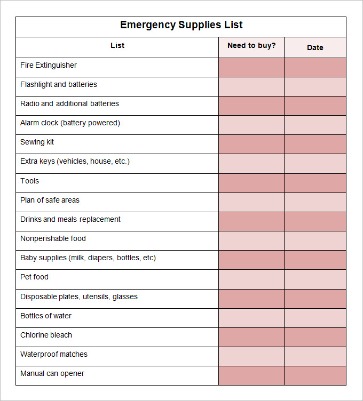
Automated reconciliation also flags discrepancies so they can be investigated immediately rather than months later. The Chase Ink Business Preferred Credit Card is suited for businesses with frequent travel needs or those that spend the most in categories like shipping, internet, cable, phone services, and advertising. It offers 3 rewards points per $1 spent in these categories (up to $150,000 in combined purchases https://www.accountingcoaching.online/ each account anniversary year) and 1 point per $1 on all other purchases. A customizable rewards card that allows businesses to earn extra points in categories where they spend the most. Some of its features include receipt matching, subscription management, and AI-powered spending insights. Ramp is an excellent choice for startups that are aiming to earn rewards on business purchases while managing expenses.

Check For Bank Errors
Physical inventories are conducted annually and through more frequent cycle counts of fewer items. Physical inventory counts must be reconciled with the general ledger, and discrepancies that can’t be resolved are recorded using journal entries. Accounts receivable details may not match the general ledger if customer invoices and credits are accrued and not entered individually into the aged accounts receivable journal. Customer account write-offs must be recorded against the Allowance for Doubtful Accounts, which nets against Accounts Receivable in financial statements. The analytics review approach can also reveal fraudulent activity or balance sheet errors. In this case, businesses estimate the amount that should be in the accounts based on previous account activity levels.

Reconciliation for businesses
For example, when a business performs a bank reconciliation, it compares its own financial statements with the records that have been received from the bank. This helps catch timing delays in deposits, payments, fees, and interest that may have been recorded by one entity but not the other. Most https://www.simple-accounting.org/accounts-receivable-process-in-bookkeeping/ are performed against the general ledger as this is considered the master source of financial records for the business. Bank reconciliation is the process of comparing accounting records to a bank statement to identify differences and make adjustments or corrections.
What accounts need to be reconciled?
This means that journal entries that hit balance sheet accounts can cause something on the income statement to shift. Account reconciliation is the process of cross-checking a company’s financial records with external documents, such as bank statements. Its purpose is to ensure accuracy and consistency of financial data, which is vital for informed decision-making and maintaining financial integrity. After finding evidence for all differences between the bank statement and the cash book, the balances in both records should be equal. You should prepare a bank reconciliation statement that explains the difference between the company’s internal records and the bank account.
You will need to check the bank and ledger balances to ensure that there are no short payments, deductions, disputes, and to stop credit facility for defaulting customers. These types of account reconciliation are crucial for maintaining financial accuracy, compliance with regulations, and preventing errors or discrepancies that could impact the overall financial health of a business. The frequency 55 virtual assistant jobs for beginners in 2021 and specific processes may vary based on the nature and size of the organization. Also, transactions appearing in the bank statement but missing in the cash book should be noted. Some of the transactions affected may include ATM service charges, check printing fees. With bank statement in-hand, you can systematically check off matching transactions one-by-one by clicking their boxes.
- A company may issue a check and record the transaction as a cash deduction in the cash register, but it may take some time before the check is presented to the bank.
- Although a single-entity small business doesn’t need to consolidate the financial statements of multiple entities, companies engaging in M&A will need to complete a consolidation.
- Accounting software automation and adding a procure-to-pay software, like Planergy, can streamline the process and increase functionality by automatically accessing the appropriate financial records.
- For small businesses, the account reconciliation process helps identify potential misstatements and ensures the accuracy of financial statements.
What are Common Account Reconciliation Discrepancies?
There are two ways to reconcile an account, which are the documentation review and the analytics review. Real-time automated payment reconciliation reports are generated to reconcile with the general ledger when batch payment runs are completed using AP automation and global mass payments software. Account reconciliation is done at multiple instances during the accounting process. Here’s a quick scorecard template you can use to score potential account reconciliation automation vendors objectively.
The accountant of company ABC reviews the balance sheet and finds that the bookkeeper entered an extra zero at the end of its accounts payable by accident. The accountant adjusts the accounts payable to $4.8 million, which is the approximate amount of the estimated accounts payable. Because the individual is fastidious about keeping receipts, they call the credit card to dispute the amounts. After an investigation, the credit card is found to have been compromised by a criminal who was able to obtain the company’s information and charge the individual’s credit card. The individual is reimbursed for the incorrect charges, the card is canceled, and the fraudulent activity stopped.
Prepaid assets are prepaid expenses that are capitalized as an asset when paid in cash. Prepaids are recognized gradually as an expense, using a monthly allocation with a journal entry to reduce the prepaid asset balance and record the expense on the income statement. Reconcile general ledger accounts to balances of short-term investments with a maturity period of 90 days or less, using brokerage and investment firm statements or financial institutions statements. Cash equivalents include treasury bills, commercial paper, money market accounts, marketable securities, and short-term government bonds. The documentation review process compares the amount of each transaction with the amount shown as incoming or outgoing in the corresponding account. For example, suppose a responsible individual retains all of their credit card receipts but notices several new charges on the credit card bill that they do not recognize.
If the numbers at the end don’t match, accountants dig into the reasons for the differences. They then fix any mistakes or missing transactions by making the necessary adjustments in the records. This helps ensure that the company’s financial information is accurate and error-free. For example, a business might compare its cash account records (from its internal ledgers) with its monthly bank statement provided by its financial institution. This discrepancy might be due to outstanding checks, bank fees, or even an error. By identifying and resolving these differences, businesses ensure their financial records are accurate and up-to-date.
For example, a grocery store dealing with daily cash transactions relies on daily cash reconciliations to manage cash flow effectively. In contrast, a consulting firm may find that monthly reconciliations for invoices and expenses are enough. Meanwhile, a construction company dealing with equipment and material costs may choose quarterly reconciliations to guarantee their financial processes operate smoothly. Performing account reconciliation is crucial for businesses to avoid errors in their financial records and to prevent potential issues during audits. Most companies prefer to reconcile their accounts monthly after closing their financial books.
From the definition, one very clear and important use of account reconciliation is to prevent errors in financial accounting activities. Although a single-entity small business doesn’t need to consolidate the financial statements of multiple entities, companies engaging in M&A will need to complete a consolidation. Accountants’ consolidation processes may use automated ERP software functionality to combine results and remove intercompany transactions or use spreadsheets. Instead of spending days each month reconciling accounts, FloQast AutoRec can do that in minutes.


